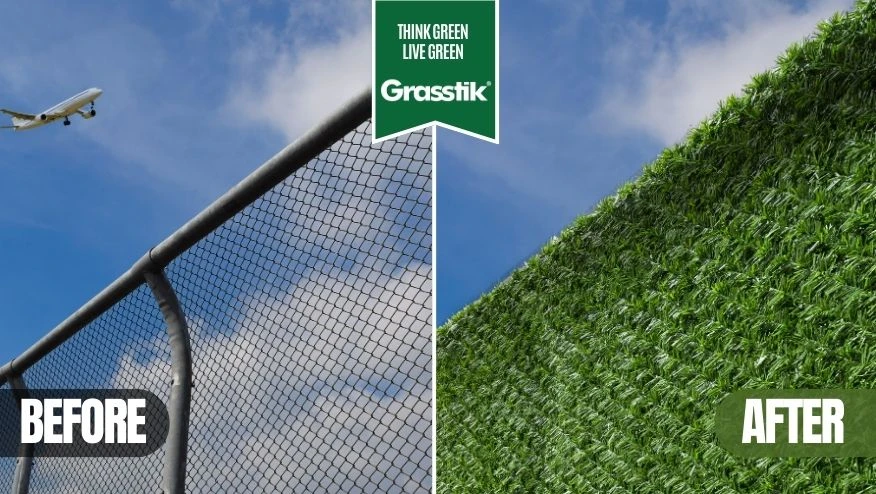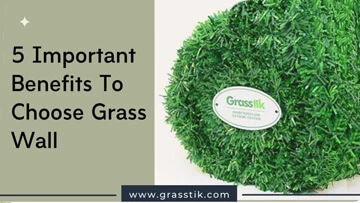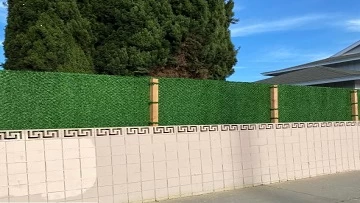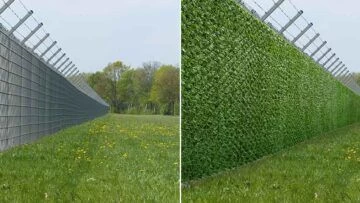
An airport fence is a crucial component in maintaining the security and safety of an airport. This physical barrier, often enhanced with advanced electronic and cybersecurity measures, serves to prevent unauthorized access and protect vital airport facilities and aircraft. By defining the airport's boundaries, the fence acts as the first line of defense against potential threats, ensuring the safety of passengers, staff, and critical infrastructure. Additionally, it helps in crowd control, wildlife management, and compliance with stringent regulatory standards set by authorities such as the Federal Aviation Administration (FAA) and the Transportation Security Administration (TSA).
What is an Airport Fence?
An airport fence is a physical barrier installed around the perimeter of an airport.
It is vital to security as it prevents unauthorized access and protects the airport's facilities and aircraft. The fence outlines the airport's boundaries, creating the first line of defense. It can be enhanced with physical, electronic, and cybersecurity systems. Overall, it is crucial for keeping staff and passengers safe, guarding fuel sources, and preventing the hijacking of planes and vehicles.
What are the Different Types of Airport Fences?
Before installing airport fencing, it is important to decide on the type that will be used. There are various options, but the most popular and common types are:
Chain Link Fences
Made of interlocking wires that create a grid pattern.
Welded Wire Mesh Fences
Security welded airport fences are made from welded wire mesh panels with wires welded together instead of interlocking.
Anti-Climb Fences
Feature narrow gaps between the wires, making it difficult for someone to gain a foothold and climb over.
Electric Fences
Designed to deliver an electric shock and provide high security.
Concrete Walls
Made of reinforced concrete and designed to withstand high-impact collisions.
Artificial Grass Privacy Fence
Combined with a chain-link fence, wrought iron fence, or concrete wall, creating a high-security grass fence.
Why Are Airport Fences Important?
An airport security fence is important for many reasons, including safety, privacy, visual appeal, defining borders, and crowd control. There are even regulations that require airports to meet specific security standards set by authorities such as the Federal Aviation Administration (FAA) and the Transportation Security Administration (TSA). These regulations provide detailed guidelines on proper installation and maintenance. Therefore, it is crucial to choose correct airport fencing that complies with these regulations to ensure safety and security.
What Role Do They Play in Security?
Airport secure fencing plays a vital role in today's world of increasing threat levels and the corresponding government-required security upgrades. These fences serve as visually intimidating barriers that provide control over the perimeter. Additionally, fencing helps keep wildlife off runways and other operational areas, which is essential for preventing accidents and maintaining safe airport operations.
To make your fences even more secure and private, we recommend you check our how to make the fences more secure blog content.
How Do They Prevent Unauthorized Access?
By adding an airport secure fence, the security of all perimeter can increase by approximately 50% to 90%, depending on factors such as the type of fence, its construction, and other considerations. This significantly reduces the likelihood of unauthorized access, potential terrorist attacks, vandalism, and other malicious activities. Modern airports often integrate these fences with motion detectors, surveillance cameras, and alarm systems to enhance security.
What Materials Are Airport Fences Made Of?
The most common materials for airport fences are metal, including galvanized steel, stainless steel, and aluminum. But they can be constructed also from concrete and artificial grass. At Grasstik, we offer two types of artificial grass walls.
Grass Fence Roll can be combined with metal fences to provide security, durability, and resistance to climbing, while also ensuring privacy for the area.
Grass Fence Panels option is ideal for setting boundaries in specific areas. It is easy to install and visually appealing, making it perfect for dividing spaces such as outdoor waiting areas, taxi stands, food courts, etc.
How to Install Airport Fences?
To determine the precise requirements for the airport security fencing, conduct a comprehensive survey of the airport’s boundary. This study should establish terrain, infrastructure, and entrances that could pose challenges. Consider the following:
Assess Threat Level
Consider the level of threat, air traffic volume, and areas needing protection.
Map Perimeter
Create detailed maps to define boundaries and identify critical areas around the airport.
Assess Landscape
Look for elevation changes, soil types, and obstacles. This helps install posts and materials correctly.
Identify Structures
Spot roads, buildings, and utilities that may impact fence installation. Make sure the fence integrates well.
Note Access Points
Consider current and future gates and exits. Align security measures with the overall plan.
Height and Length
Decide on fence height and length, meeting regulations and safety standards. Common heights are 8 to 12 feet, with taller fences providing more security.
Enhance Security
With barbed wire/razor wire, electronic surveillance, proper lighting along the fence, and signage.
What is the Installation Process?
- Site Preparation
Clear obstructions and level the ground.
Mark the fence line according to design specifications. - Post Installation
Install fence posts at specified intervals.
Set posts in concrete for stability and durability. - Fence Installation
Attach the fence fabric (e.g., chain link, welded wire mesh) to the posts, ensuring it is taut and secure.
If you are using Grasstik Panels or Grasstik Rolls, please visit our website for more detailed instructions. - Security Enhancements
Add barbed wire, razor wire, or electronic sensors. - Gates and Access Points
Install gates and access points to match the security standards of the rest of the fence. - Inspection and Testing
Conduct a thorough inspection to ensure proper installation and functioning of all security features.
What Equipment is Required for Installation?
Fence Panels or Rolls
Chain-link, mesh, Grasstik walls, etc.
Sturdy Posts
These may be made of steel, aluminum, or another durable material.
Post Hole Digger
Either a manual post hole digger or a powered auger.
Concrete
To secure the fence posts in the ground.
Level
To prevent any leaning or instability of posts.
Fasteners
Nuts, bolts, screws, and other fasteners.
Gate Hardware
Such as hinges, latches, and locks if the fence includes gates for vehicle or pedestrian access.
Wire Cutters
If you're installing a chain-link fence or another type of wire-based fence.
Safety Gear
Personal protective equipment (PPE).
Transportation Equipment
Such as forklifts or trucks for transport.
Surveying Tools
Measuring tapes, laser levels, and markers.
Heavy Machinery
For larger airport projects, cranes or earth-moving equipment may be required.
Security Equipment
Surveillance cameras, motion sensors, or intrusion detection systems.
Compliance Documentation
Ensure you have all necessary permits, approvals, and compliance documentation with airport fencing standards.
What Should Be Considered During Installation?
In the planning process, ensure regulatory compliance of airport fencing standards with the following:
- FAA Regulations: The Federal Aviation Administration has guidelines for airport security that include fencing requirements. It covers aspects such as minimum height, construction standards, and maintenance.
- TSA Regulations: The Transportation Security Administration provides security directives that outline the necessary measures for airport perimeter security, including fencing.
- ICAO Standards: International airports should also consider the International Civil Aviation Organization (ICAO) standards and recommended practices for airport security.
- Local and State Regulations: Be aware of and comply with any local or state regulations that may apply to the installation of security fences.
How to Maintain Airport Fences?
Ensuring the airport fences are well-maintained is paramount for safeguarding the security and safety of the entire premises. These properly kept barriers play a vital role in averting accidents by effectively deterring wildlife, managing debris, and preventing unauthorized access. Overall, an airport with well-maintained fences portrays an image of professionalism and competence, earning it a high reputation and the trust of its patrons.
Is Regular Maintenance Required?
Factors such as weathering, wear and tear, vegetation growth, and potential damage from wildlife or intruders necessitate ongoing attention to keep the fences in optimal condition.
What Steps Are Involved in Maintenance?
- Inspection
Regular visual inspections are essential for identifying any signs of damage, deterioration, or breaches in the fence. Check for loose or missing fasteners, damaged panels, leaning posts, and any indications of corrosion.
- Repair and Replacement
Any issues discovered during inspections should be promptly addressed by repairing or replacing damaged components. This may involve re-securing loose fasteners, straightening leaning posts, patching holes, or even replacing entire sections of the fence if necessary.
- Vegetation Management
Regular trimming of vegetation near the fence line is necessary to prevent it from obstructing visibility or exerting pressure on the fence structure.
- Corrosion Control
For metal fences, periodically check for corrosion. Corrosion weakens the fence and compromises its effectiveness. Any signs of corrosion should be promptly treated with appropriate rust inhibitors or protective coatings.
- Security Features Maintenance
If the fence includes gates, locks, or security features such as cameras or motion sensors, these should undergo regular inspections to ensure they function correctly.
- Documentation
It's important to maintain records of maintenance activities, including inspection reports, repair logs, and any relevant documentation related to compliance with regulatory requirements. This documentation serves as a valuable reference for tracking maintenance history and demonstrating compliance with airport fencing standards.




